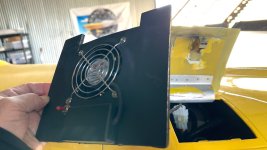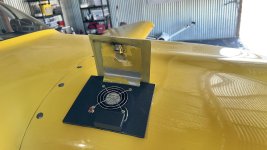Tumper
Well Known Member
I need help with a rough idle problem. It only happens when it is hot after a flight. The cold idle is very smooth. The problem really rears its ugly head after a flight when I touch down and get pretty slow. About the time I am ready to turn off the runway and the tower is telling me to contact ground. Normally I would be idling at about 800 RPM, however the engine would die if I was tried that. I have to keep the engine at about 1200 RPM to keep it running. It will run for a few seconds and then cough and almost die and then it catches and run for a few second and coughs and almost dies again. I have tried different things with the mixture but no relief. As a bit of additional information, when I pull the mixture to kill the engine I get about a 50 rpm increase in engine speed.
Let me describe my airplane/engine set up.
I am flying an RV-9 with an IO360 engine, composite C/S prop, Airflow Performance fuel injection system and dual P-mags. I have a plenum cover and to combat the heat I installed a mechanical fuel pump shroud with a blast tube from the rear engine baffle wall. The only fuel lines in front of the fire wall that are not covered with fire sleeve are the lines from the spider to the injection nozzles.
I talked to Airflow Performance and they thought it was boiling fuel problem maybe at the mechanical fuel pump.
I have talked to others and they suggested an air filter issue. I am flying a K&N filter with a Rod Bower ram air system. I have opened the valve to bypass the air filter and it still idles rough.
Has anyone had a similar problem? Does anyone think it is fuel boiling in the fuel injection spider?
Any thoughts?
Thanks for your help.
Let me describe my airplane/engine set up.
I am flying an RV-9 with an IO360 engine, composite C/S prop, Airflow Performance fuel injection system and dual P-mags. I have a plenum cover and to combat the heat I installed a mechanical fuel pump shroud with a blast tube from the rear engine baffle wall. The only fuel lines in front of the fire wall that are not covered with fire sleeve are the lines from the spider to the injection nozzles.
I talked to Airflow Performance and they thought it was boiling fuel problem maybe at the mechanical fuel pump.
I have talked to others and they suggested an air filter issue. I am flying a K&N filter with a Rod Bower ram air system. I have opened the valve to bypass the air filter and it still idles rough.
Has anyone had a similar problem? Does anyone think it is fuel boiling in the fuel injection spider?
Any thoughts?
Thanks for your help.







